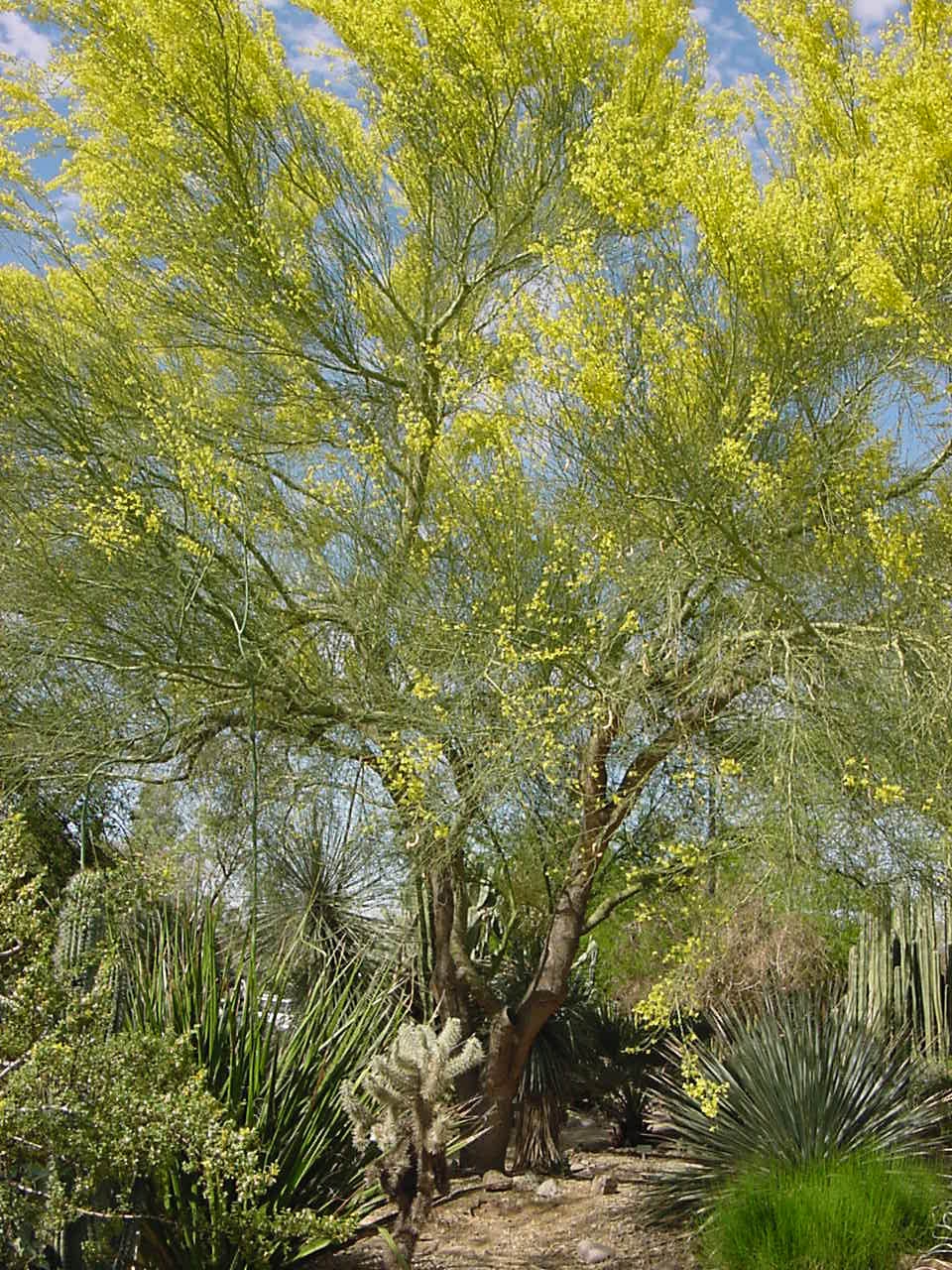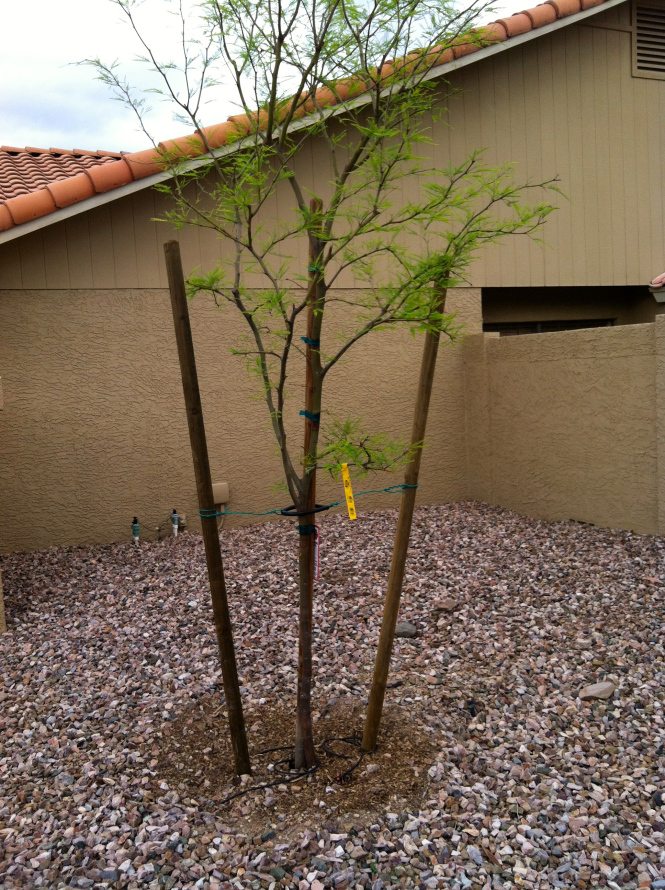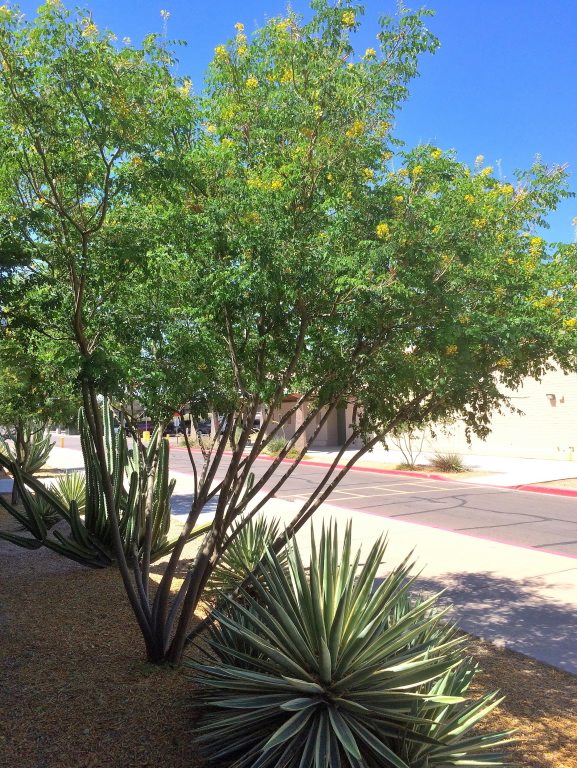It is far too common to see trees that are entirely too large for the yards they occupy. When trees with mature canopies reaching 30 foot or greater (like Ficus or Chilean mesquite) are planted in tiny front or narrow side yards, the amount of pruning needed to keep the trees a manageable size is overwhelming. Not only is it a tremendous amount of work and expense, but the pruned branches represent green waste which ends up taking space in our landfills.
Selecting the Right Tree
Here are some hints to help you select the right tree for your yard:
Consider the Mature Size – Be sure to consider the mature height and width of the tree and plant accordingly. It is often deceiving to see the small trees in their petite 5- or 15-gallon containers at the nurseries.
Leave Ample Room – Don’t be fooled! After checking the mature size, divide the width in half and place the tree no closer than that to your home’s foundation or your fences.

Making a Point – Think about the way your yard is used. Avoid planting thorny trees near active areas or walkways.
Desert Dwellers – Know that many desert trees, such as Palo Verdes, Acacias and Mesquites have a multi-trunk, shrub-like structure by nature. This survival mechanism helps to shade the ground below and conserve moisture. Pruning desert trees into one central trunk or lollipop shapes — so they fit the space — is unnatural, stressful for the plant and often unnecessary.
Dare to Cross the Line? – Don’t forget that plants do not formally recognize property boundaries. Planning for a tree’s mature size will help avoid canopies that may extend into adjacent property. Be conscientious about the impact of the tree canopy on the neighbor’s property.
Don’t Crowd the Canopies – Provide trees with ample room for branch development. Trees spaced too closely together or too near adjacent structures often become bowed or lopsided as they reach for sunlight.
Support Group – You do not need to automatically stake a tree. Try to choose nursery stock that looks stable in the container, so you will not need to stake it once it is in the ground. If the tree cannot stand without a stake, make sure the ties are adjusted regularly so they are not tight on the trunk. Slight movement of the trunk within the ties triggers the creation of dense wood resulting in a stronger trunk. A tree should not be staked for longer than one year, as long as it is being watered correctly and at the right location.

Remember the Roots! – A tree’s active feeder roots are at the canopy line and beyond. So, be sure to water in those locations and not right up next to the trunk. Trees that are watered deeply and infrequently at the canopy drip line are less susceptible to windthrow in our monsoon season.
To learn more about proper watering, refer to our free brochure, Landscape Watering by the Numbers or use our interactive plant and lawn watering guides.
Use Large Shrubs as Small Trees – Many large shrubs can be trained into fine specimen trees for tiny areas. Carol Shuler, Arizona landscape architect suggests the use of tall, upright plants that bloom. For example, instead of an oak tree consider Mexican Bird of Paradise. Other species to consider include Desert Orchid Tree (Bauhinia lunarioides), Texas Olive (Cordia boisieri), Kidneywood (Eysenhardtia orthocarpa), and Sugar Bush (Rhus ovata).
So, what trees might make a great addition to your desert landscape? Refer to our Guide to Small Desert-Adapted Trees. You also might find this publication on Plant Selection and Selecting Your Plants from the University of Arizona Cooperative Extension helpful in determining the right plant for the right space.
Be sure to visit the Water – Use It Wisely web pages for free landscape workshops, landscaping tips, and more.
Here are a few more articles about trees:
- 10 Pruning Tips for Healthier, Prettier Desert Trees
- At Stake: Securing Your Tree’s Future
- Plant of the Month: In Celebration on Trees for Arbor Day
- ‘Tis the Season … for Planting!
The City of Chandler is one of 20 Water – Use It Wisely partners to offer water-saving advice and programs.


